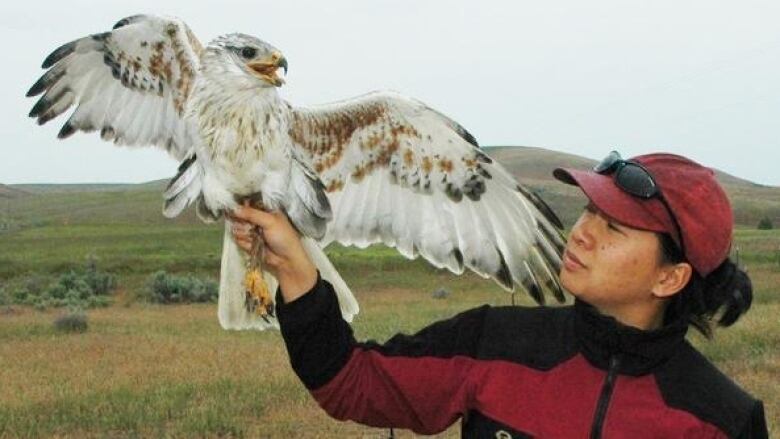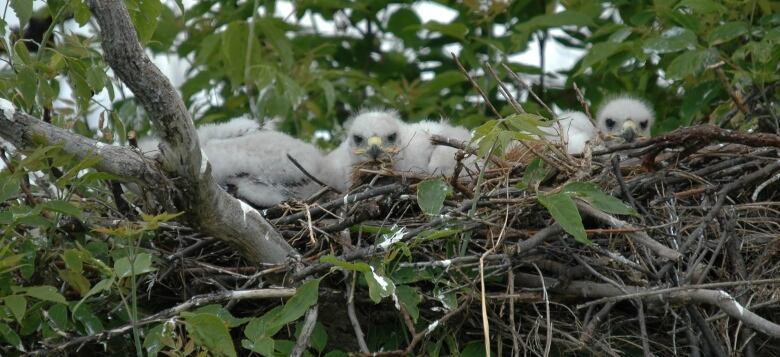Unlikely predators: Owls, raccoons feast on endangered baby hawks
Video footage shows other predators raiding hawks' nests

The ferruginous hawk, North America's largest hawk, is a fierce predator that survives on a diet of small mammals.
But their populations are in decline, and the species is designated as threatened in Canada.
New research from the University of Alberta has revealed two unlikely predators: raccoons and great horned owls that attack baby ferruginoushawks in their nests at night.
Digital video cameras set up to monitor 90 nests in southeastern Alberta and southwestern Saskatchewan in 2011, 2012 and 2013 recorded a total of four attacks on nestlings, two by raccoons and two by owls.
Janet Ng, a U of A PhD candidate, said she and her fellow researcherswere trying to discover ways to help slow the decline in the number offerruginoushawks and help populations rebuild.
"Since about the 1990s they've lost about half their populations," Ng said."They're not found in some of the places that they were before either, so these are all concerning things."
Looking for ways to reverse population decline
The hawks nest primarily in lone trees, and occasionally artificial nest platforms.
Researchers set up their cameras to learn more about what nestlings were eating.
They were alerted to the predation problems after finding some nests that were empty.
"We were surprised when we came up to a nest that had three nestlings, and another one that had two nestlings, and these nests were empty," she said.
The video footage, recorded on small, infrared home-security cameras, told the tale.
"We could see, wow, we had great horned owls attacking nestlings, we had raccoons attacking nestlings," Ng said. "It was really surprising to us."
Parent hawks not able to protect nestlings
Researchers thought the parents would have been able to protect their babies, she said.
"Ferruginous hawks are really big, feisty predators. We wouldn't expect the nestlings to be quite so vulnerable."

The attacks happened between 3 a.m. and 4 a.m., a time when raccoons and owls are busy hunting.
That's when the hawks were likely roosting, sleeping nearby or circling thenesttryingto ward offpredators.
"The parents didn't come back to protect the nestlings and that's surprising because they are generally quite defensive during the day," she said.
In one case, a raccoon bumped a femalehawk mom right off her nestlings.
Ng said researchers will now look into what percentage of nestlings are eaten by other predators, like raccoons and great horned owls.
"That's an important question to understand to better conserve and recover this population," she said.
The research team said risk to ferruginous hawks can be reduced by placing nesting platforms away from known owlnests and including deterrents that prevent raccoons from climbing into nests.














_(720p).jpg)


 OFFICIAL HD MUSIC VIDEO.jpg)
.jpg)



























































































